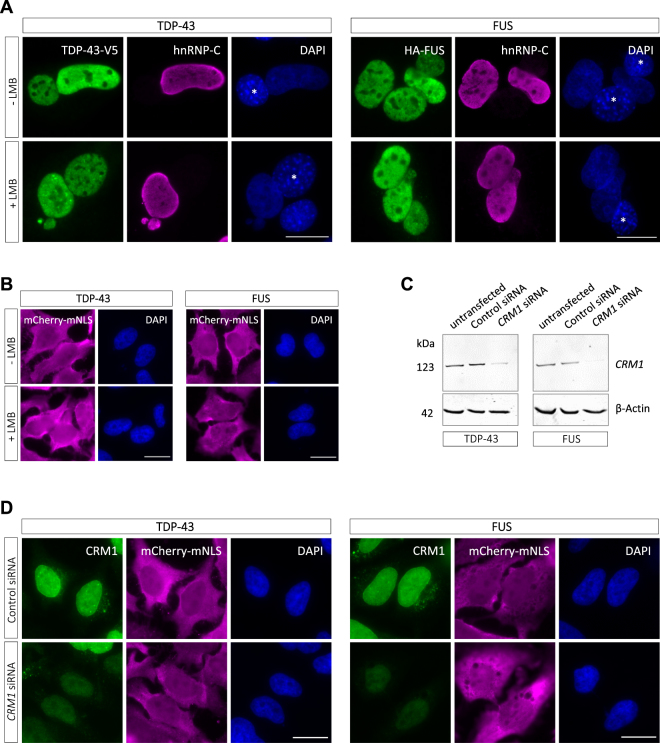Figure 2.
Nuclear export of TDP-43 and FUS is CRM1-independent. (A) Heterokaryon assay performed to analyze nuclear export of TDP-43 and FUS with or without CRM1 inhibition. 20 nM Leptomycin B (LMB) was added to heterokaryons directly after fusion and cells were incubated for 2 h (TDP-43) and 3 h (FUS), respectively, in the presence of cycloheximide. Cells were stained with a V5- or HA-specific antibody (green), a human hnRNP-C-specific antibody (magenta) and DAPI as a nucleic acid stain (blue). LMB does not inhibit shuttling of TDP-43 and FUS from human to mouse nuclei (marked with an asterisk in the DAPI channel), demonstrating that export of TDP-43 and FUS is CRM1-independent. Scale bars: 20 μm. (B) Hela cells stably expressing mCherry-tagged TDP-43 and FUS with mutated NLS (mNLS) were treated with LMB (20 nM) for 2.5 hours. LMB treatment does not cause a nuclear accumulation of NLS mutant proteins. Scale bars: 20 μm. (C) and (D) HeLa cells stably expressing mCherry-TDP-43-mNLS or mCherry-FUS-mNLS were transfected with control or CRM1-specific siRNA. 3 days post-transfection, CRM1 levels in total cell lysates were analyzed by Western blotting, β-actin served as a loading control. (C) In parallel, cells were stained with a CRM1-specific antibody (green), a mCherry-specific antibody (magenta) and DAPI and were imaged by fluorescence microscopy. (D) Cells with reduced CRM1 levels do not show a nuclear accumulation of mCherry-tagged NLS mutant TDP-43 or FUS. Scale bars: 20 μm.

